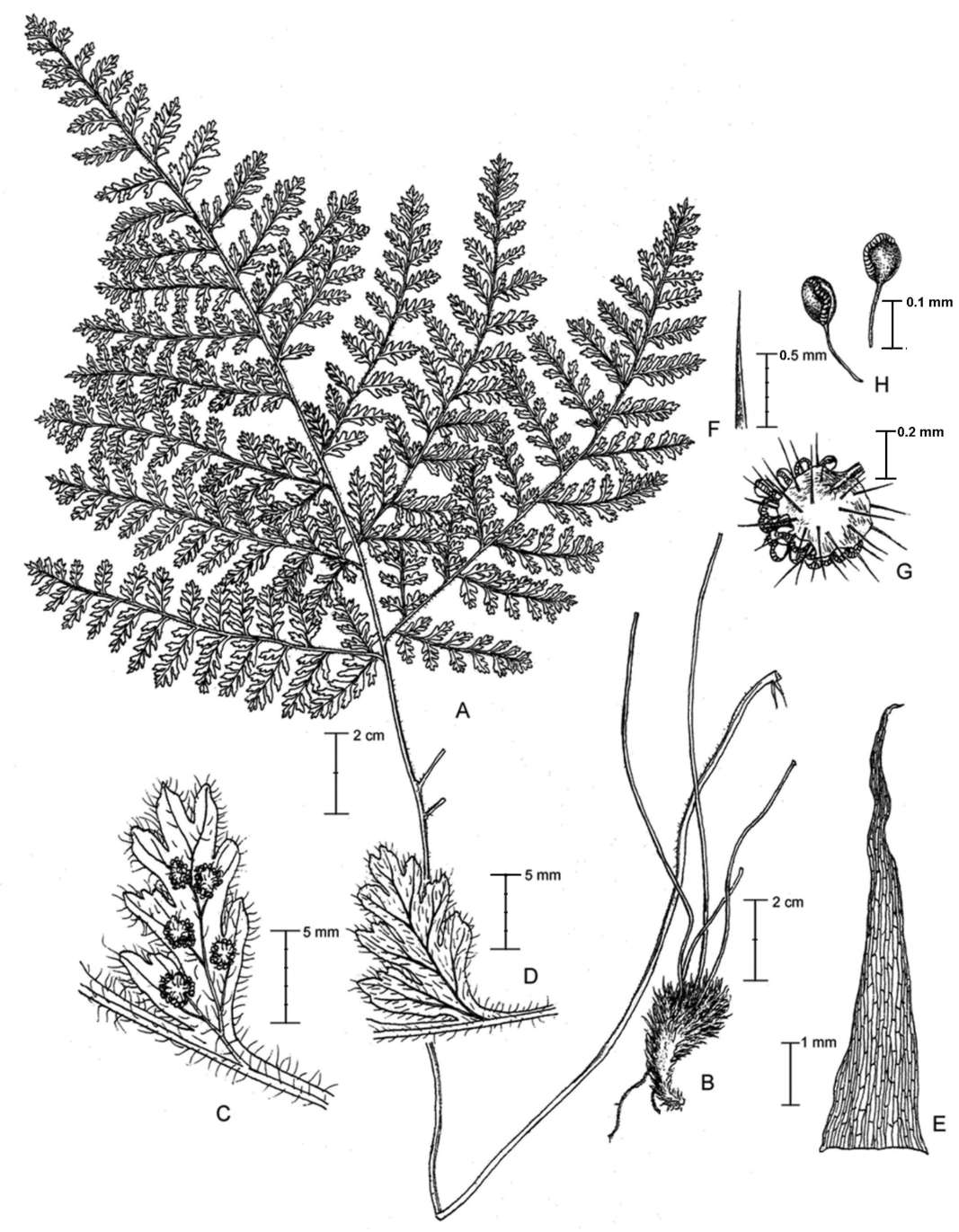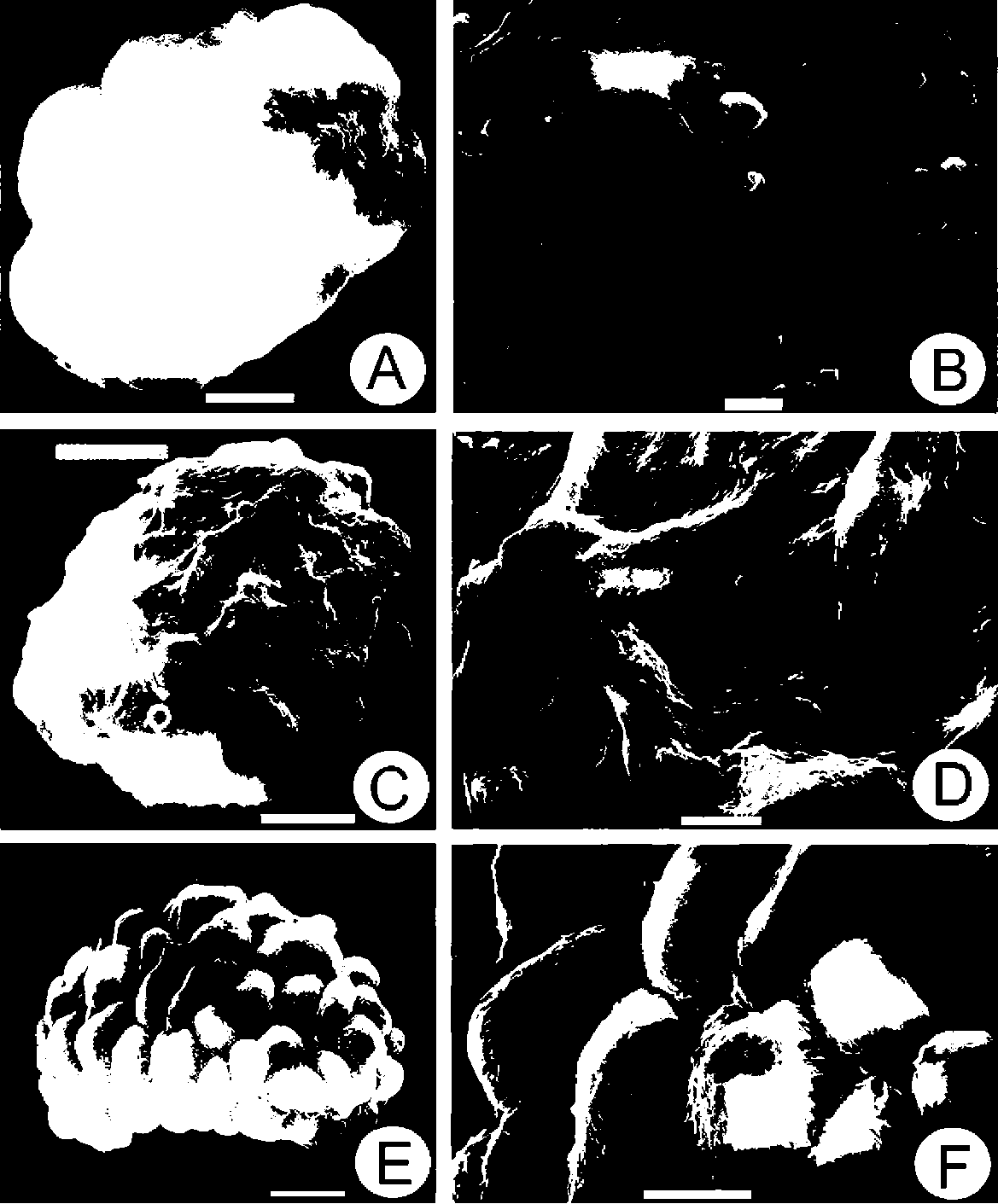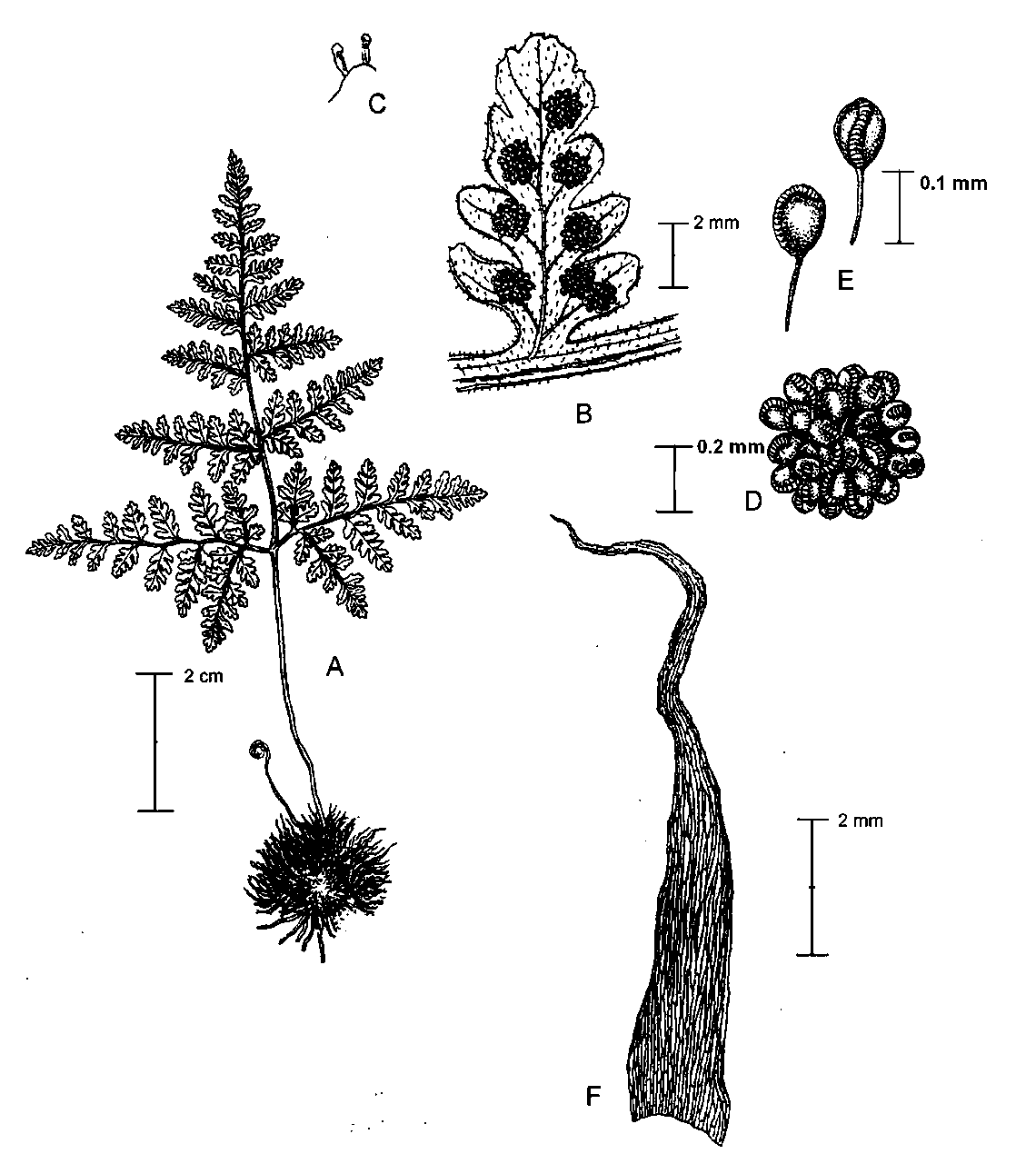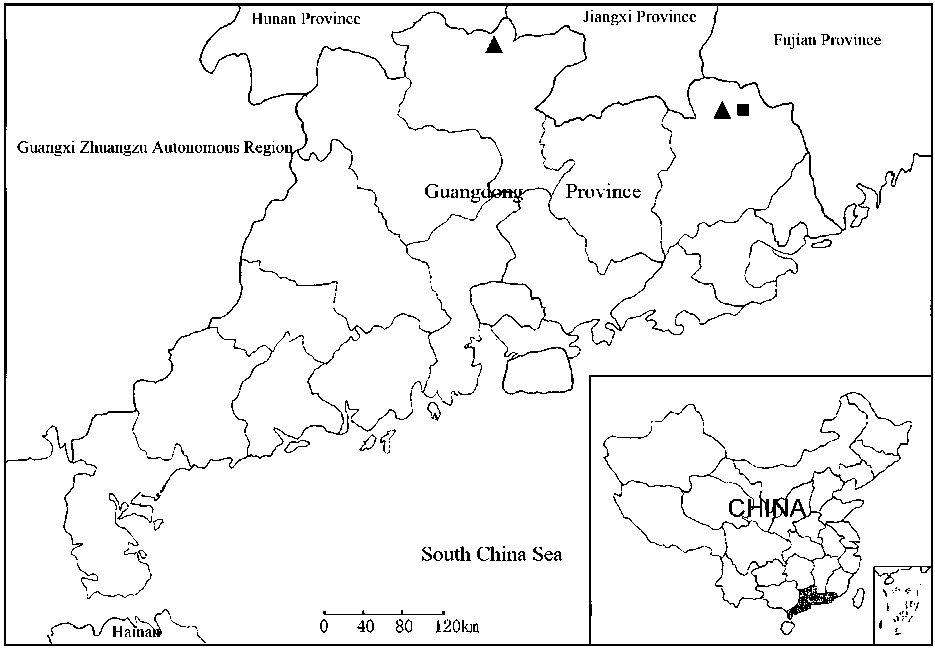|
|
and H. crenatum is given in Table 1.
2. Hypodematium humile F. G. Wang & F. W. Xing, sp. nov. ―TYPE: CHINA. Guangdong Province: Meizhou City, Jiaoling County, Xinpu Town, Youkeng Village, Xianyan temple, limestone mountain, altitude 100 m,
15 xi. 2005, Faguo Wang et al. 1255. (holotype: IBSC).
矮腫足蕨 Figure 3
Species affinis H. glanduloso, sed foliis 8-11 cm longis, squamis 0.4-0.6 cm longis, petiolo c. 0.5 mm diametro, pinnis praeter eas basiscopicas sessilibus, lamina, rhachi et costa pilis sparsis bacillaribus glandiferis obtectis, pinnulis apice obtusis, indusiis caducis differt.
Plants 8- 1 1 cm tall; rhizome short, suberect, covered with scales; scale ca. 0.9 cm long, reddish-brown, narrowly lanceolate, apex acuminate, glabrous, membranaceous. Leaves 1 or 2, petiole 4-5 cm long, ca. 0.5 mm in diameter, stramineous, base and middle glabrous, sparsely covered with rod-shaped lemon-yellow glandular hairs upward; lamina 4.5-5.5 cm long, base 5-7 cm wide, ovate-quinquangular, apex acuminate and pinnatifid, base rounded cordate, tripinnate; pinnae 6-7 pairs, slightly oblique, basal 1-4 pairs subopposite, 0.4-1.2 cm apart, alternate upward, first basiscopic pair enlarged, 2.5-3.5 cm long, base 2-2.5 cm wide, triangular-ovate, apex obtuse, base cordate, with petiole c. 3 mm, bipinnate; pinnule 4-5 pairs, anadromous, alternate, slightly oblique, close together each other, basiscopic pinnule bigger than acroscopic ones, oblique, close together; first basal pairs of secondary pinnules opposite and enlarged, 1-1.1 cm long, base c. 1 cm wide, triangular-ovate, apex obtuse, base nearly truncate, decurrent to short petiole with narrow wing, pinnate; secondary pinnule 3-5 mm long, base c. 3 mm wide, triangular-ovate, apex obtuse, base connate with costa more or less, pinnatifid; pinnulet nearly trapeziform, apex obtuse, entire; other pairs of pinnae shorten upward, apex obtuse, base rounded truncate, sessile, bipinnatifid, pinnule on both sides nearly with same size. Veins obvious abaxially, veinlet forked or pinnate, ending in margin;
|
lamina herbaceous, yellowish green when dry, sparsely covered with rod-shaped lemon-yellow glandular hairs on both surfaces; rachis and costa sparsely covered with hairs the same to the lamina. Sori rounded, dorsiferous on the upper part of veinlet, one on each lobe; indusium caducous; spore monolete, ellipsoid, perispore irregularly lophate.
Additional specimen examined. CHINA. Guangdong Province, Shaoguan City, Renhua County, Danxia Mountain, Guangdong Province, China, alt. 200 m. 12
Mar 2005, Faguo Wang et al. 1024 (IBSC).
Distribution. Hypodematium humile is restricted to the type locality (Figure 4).
Ecology. It is a rock plant that occurs on rocky tunnels, limestone cliffs, or Danxia (literally, red cloud) mountain. Plants were collected in association with Ctenitopsis devexa (Kunze ex Mett.) Ching & Chu H. Wang, Pteris deltodon Baker, P. ensiformis Burm., Selaginella moellendorffii Hieron. and Lemmaphyllum microphyllum
C. Presl.
Conservation status. It is known only from two sites and its populations are small. Therefore, we consider this species Critically Endangered (CR) according to the IUCN (2001) conservation categories.
Etymology. Named from the Latin word 'humile', a reference to the short individual that distinguishes other species of Hypodematium except H. microlepioides.
Spore morphology. The spore of H. humile is monolete and ellipsoid, and the perispore is irregularly lophate (Figure 2). However, the perispores of related species H. glandulosum and H. crenatum are circinate and striate, respectively.
Morphological notes. Hypodematium humile resembles H. glandulosum Ching ex Shing, which is distributed in Hunan and Guizhou Provinces of China (Shing et al., 1999). Both species have rod-shaped glandular hairs on lamina, rachis, and costa. However, the former differs primarily by having leaf 8-11 cm long; scale 0.4-0.6 cm
|
|



